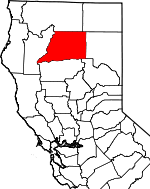 |
| Screenshot from Shasta Scout story about militia podcast |
Militia members recently collected enough signatures to force a recall vote Tuesday for three supervisors, and apparently enough votes to out Supervisor Leonard Moty, a lifelong Republican and former Redding police chief. "With all 23 precincts reporting Tuesday night, recall supporters had 52.78% of the 'Yes' vote, while 47.22% of voters cast ballots against the effort to remove Moty from office. The tally remained unchanged on Wednesday," Benda and Arthur report.
As of Thursday evening, nearly 2,000 votes remained uncounted, and the elections office said it will continue receiving ballots from the post office through next Tuesday. "Moty is expected to continue serving as chair of the Board of Supervisors at next Tuesday's meeting, as elections workers continue to count mail-in ballots," Benda and Arthur report. Moty said in a statement that the recall was funded by "an out-of-state millionaire who is seeking revenge against the county" and that it had "done nothing more than sow hate and division in our community."
 |
| Shasta County (Wikipedia map) |
The photo, which Facebook labeled false, actually shows Nazi war criminals being hung in Ukraine, Reuters reports. The Holocaust Encyclopedia reports that the Nuremberg defendants included the head of the radio division of the German propaganda ministry and the editor of a racist, anti-Semitic newspaper, who was the only "media" member executed, Agence France-Presse reports.





